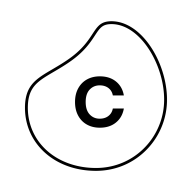
Well-insured - UNIQA harmonizes their claims handling with Celonis
Imagine, you’ve been involved in a rear-end collision. You exchange insurance and contact information with the other parties involved and report the accident to your insurance company. This is where insurance companies like UNIQA Austria get active. Their claims settlement process needs to be seamless to make customers feel they’re in good hands.
"Our customers want fast service. That doesn’t mean they expect the damage to be reimbursed immediately. Above all, they want to feel taken care of and treated individually. With hundreds of thousands of claims, of course, that's not easy," says Nadine Fiedler, who works at the claims management department at UNIQA.
With 3.6 million customers, UNIQA Austria is one of the largest insurers in Austria. For private customers, the service portfolio extends from health and pension plans to motor vehicles and housing.
Coming from a process-oriented approach in the area of operational excellence, they wanted to optimize claims handling the same way. This time with Celonis.
Finding the needle in a haystack of more than 100,000 variations
Today, tech giants like Google and Amazon are setting standards at a pace not every industry can keep up with. Especially in times of same-day delivery and video-on-demand, the Service Level Agreement (SLA) to resolve uncomplicated cases within seven days seems like half an eternity.
But it's more complicated than it looks. If you look at property and vehicle damage alone, UNIQA's internal processes are highly complex. Reported claims are processed across five individually specialized locations.
These locations have their own team mailbox which receives damage reports via email, fax, or physical mail. These damage reports are in turn assigned to a responsible clerk within the location.
At the same time, UNIQA’s system landscape resembles a widely-branched root system: First, there is the core system for the claims processing, which in turn interacts with numerous other systems. On top of that, UNIQA has separate systems for incoming mail, EDF (electronic document flow), document management, expert commissioning, and field claim services.
"There was a lot of friction between systems that actually have to work together. Our primary concern was to get a better overview and to find out where the process was stalling," Fiedler recalls.
With the focus on elementary insurance, Celonis was able to identify over 100,000(!) different process variants in the POV phase alone.
From 70% to 90%: Clear responsibilities for claims processing
An important task within claims handling is the correct routing of e-mails. At UNIQA, claims teams are specialized in individual topics, and incoming cases need to get sent to the right team via EDF.
Prior to Celonis, responsibilities were assigned, for example, by using certain words or branch-specific numbers in the email subject line. Employees reported they had to spend a lot of manual effort because the cases forwarded in this way didn’t always find the right team.
An analysis with Celonis showed that the employees’ gut feeling was right. Only about 70% of all cases were forwarded correctly. "Ping Pong", as Nadine Fiedler says. So they needed to act.
In cooperation with UNIQA's IT department, claims management introduced a routing system that compares the claim number with the responsible clerk. In addition, clerks were instructed to include the claim number in the subject line of outgoing correspondence so that emails are assigned correctly from the start.
The result: Claims management now reaches a rate of 90 % of correctly assigned cases, a number that’s improving steadily.
Process optimization at UNIQA: Every report finds its right addressee
But that's not all. Celonis’ data-driven analysis showed that although damage reports landed in the right team mailbox, in many cases they didn’t find the responsible clerk. The expert reports were always sent with the same subject matter, which included the individual claim number.
Theoretically, this should work smoothly, but a close examination revealed that claim numbers were only accepted in certain formats. If the format was wrong, the expert report didn’t end up with the right UNIQA clerk.
The solution was an adjustment within the appraiser software. The claim number can now only be typed in when the format is correct; and so every incoming report, whether by email, fax, or physical mail, finds its correct addressee.
"All our processes must be in place" - UNIQA gets future-ready with Celonis
At the micro-level, these harmonizations seem like small adjustments. But for an insurer the size of UNIQA, these process improvements save vast amounts of time, manual steps, and resources. And they ensure that all customer inquiries can be processed within the SLAs.
Up to now, UNIQA has used Celonis to optimize the areas of liability, motor, and natural hazard insurance in claims management. Their next step is to analyze, improve, and monitor legal protection and thus all areas of claims processing with Process Mining.
For the future, UNIQA has two further topics in mind: With the Action Engine, the company wants to proactively respond to urgent claims. In addition, the existing core system will be completely renewed by 2025. "By then, all processes must be in place," explains Nadine Fiedler. And UNIQA is confident to achieve this.



